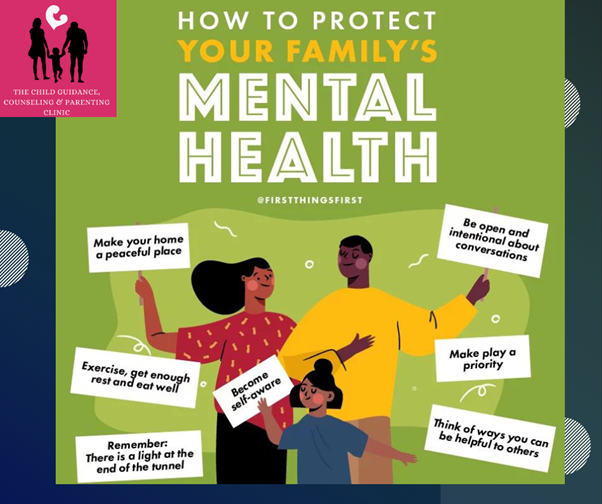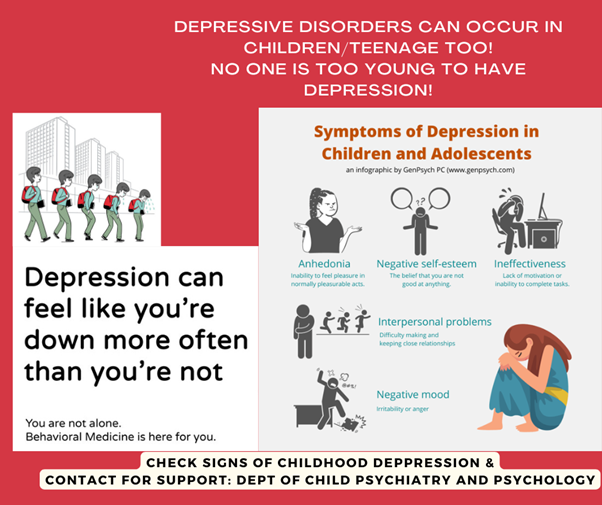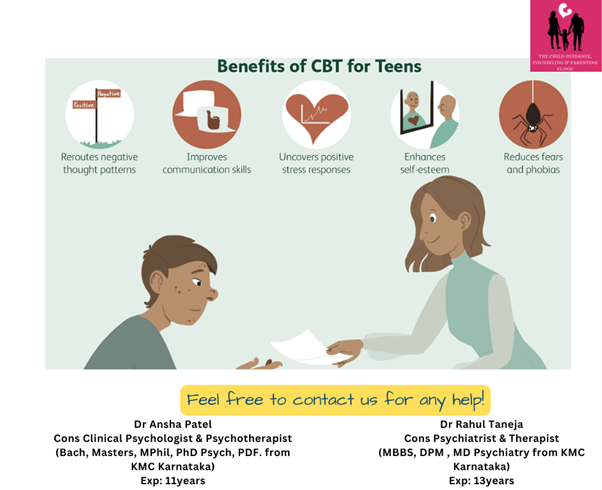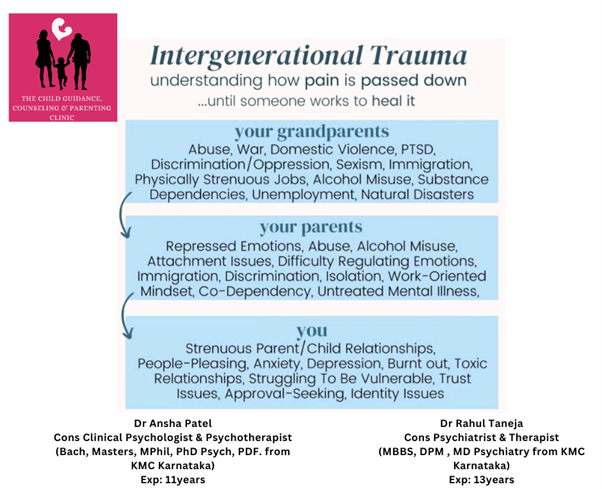Depressive and Mood Disorders Treatment for Children in Udaipur
Mood disorders in children and adolescents can be caused by a number of factors, including genetic and psychosocial factors ( family issues, academic stress, relational problems, bullying, spending a lot of time using social media, or having another condition such as attentional problems, learning issues, conduct or anxiety disorders ).
Common variants of mood disorders include deprssive disorders and bipolar disorders. Untreated depression or mood disorders in children and adolescents may increase the risk of substance abuse, poor work, academic, and social functioning and risk of suicidal behaviors.
At child guidance and parenting clinic (CGC), udaipur, our team of child specialists are skilled at treating all varieties of depression and other mood disorders.


Causes of mood disorders
The causes of depression and other mood disorders in children and adolescents involves a combination of various medical or genetic or psycho-social factors. It is believed to result from interactions of genetically determined risk factors and environmental stress (particularly early life stress such as loss, abuse, injury, natural disaster, domestic violence, death of family member, family conflict, parental separation, criticism, failure to achieve academically, bullying and deprivation etc).
Depression in children is most likely the result of one or more of the following:
- Genetics and family history (other close biological relatives have depression).
- Physical illness or injury .
- Stressful life events like parental separation, dispute, divorce, moving or the death of someone close to them.
- Substance use.
- Addiction .
- Bullying or exposure to other traumatic experiences.
- Schooling troubles/academic issues.

Facts on how common is depression in children and adolescent
About 3% of children and teens between the ages of 3 and 17 have depression. It’s more common in teens than children. About 1 in 5 teens have been diagnosed with major depression. And that’s only those that have an official diagnosis.
The actual number is likely much higher. In children and teens with certain chronic illnesses like diabetes, epilepsy, chronic pain and asthma, the rates of depression might be even higher.
Risk factors for mood disorders
There are many risks that may contribute to childhood depression and bipolar disorder, including:
- A close family member with depression.
- A history of depression, anxiety disorders, gender dysphoria, attention-deficit/hyperactivity disorder or conduct issues.
- Adverse childhood experiences
- Family disturbances
- Parent child conflicts
- Bullying.
- Identifying as LGBTQAI+.
- Family conflicts.
- Loss of a loved one or a romantic relationship.
- Medical history, including low birth weight, brain injury or chronic illness (like diabetes).
- Problems with friends.
- Puberty.
- Substance use.
- Family history of suicides/self harm
Diagnosis and treatments for mood disorders
If you think your child is showing signs of depression/ mood disturbnaces, talk to a healthcare provider. Start with your family doctor or child’s pediatrician. They may refer you to a mental health professional for a more detailed evaluation.
You can also seek a consultation from a child psychologist or psychiatrist.
The healthcare provider will likely start by ruling out conditions that may be causing your child’s mood issues. Illnesses known to cause symptoms of depression include:
- Congenital genetic diseases
- Neurological issues
- Chronic pain.
- Cancers
- Head injury /Concussion.
- Hypothyroidism or hyperthyroidism.
- Vitamin B12/D deficiency.
To diagnose a mood disorder in your child, the child psychologist or psychiatrist will talk with both you and your child. The psychiatric evaluation entails a detailed history, including characteristics of the symptoms: onset, duration, frequency, intensity, severity and pervasiveness (home, family and school). Other medical and psychiatric illnesses should be screened for because depression is associated with many psychiatric comorbidities and is more frequent in children with chronic medical conditions. Psychological evaluation for you and your child may also be advised.
Treatments of mood disorders
There are two main ways to treat depression and other mood disorders in children: psychotherapy and medication. Both of these treatments may work on their own, but they seem to work better together.
Psychotherapy can be useful as initial therapy for children and adolescents with mild to moderate depression and as an adjunct to medications for children with more severe depression. It encompasses a multitude of approaches including play therapy, psychodynamic therapy, supportive therapy, interpersonal therapy, family therapy, group therapy and cognitive behavior therapy.
A preponderance of the available research has dealt with cognitive behavior therapy in adolescents (10 years and older). The basis of this treatment modality is helping patients change the negative cognitions about themselves and the world that contribute to their depression.
Optimal treatment also involves education of the patient and his or her family. This not only enhances understanding of the disorder but can also improve patient compliance with therapy. It can decrease the tendencies of the parents to blame themselves or their child for the disorder and may alert parents to depressive tendencies in themselves or other family members. Given the high prevalence of affective illness in first-degree relatives of patients with major depressive disorder, family education can be an integral component of improving the patient’s environment and support structure by allowing for the treatment and healing of the whole family. Optimally, this education and collaboration should occur within the patient’s community as well, especially the school, to provide improved support in all significant settings.
Although treatment for childhood depression can take time to work, it generally reduces symptoms. With treatment, many children and teenagers with depression /biploar disorder participate in activities that interest them, form solid friendships and finish school.
Our posts





Informatives by dr ansha patel on depression
Further references
- Depressive Disorders in Children and Adolescents. Retrieved from https://www.msdmanuals.com/professional/pediatrics/psychiatric-disorders-in-children-and-adolescents/depressive-disorders-in-children-and-adolescents.
- Depression in Children. Retrieved from https://my.clevelandclinic.org/health/diseases/14938-depression-in-children
Book With Us Now
Get an Appointment
Support your child’s development—book your appointment today for expert guidance!
